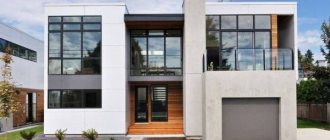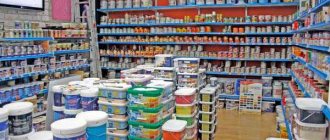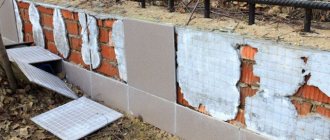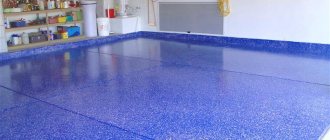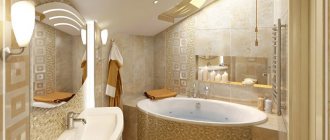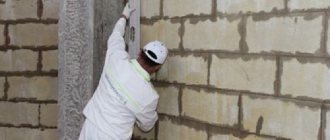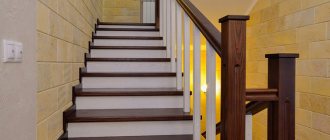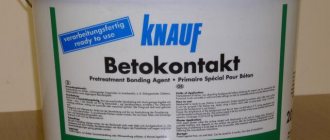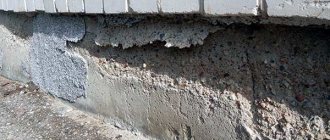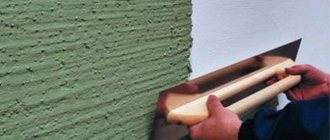Advantages of facade paints
The durability and appearance of the building depends on the choice of coating Painting the facade has a number of advantages , among which are:
- Protection from moisture. Painted walls are less likely to get wet and crumble.
- Hygroscopicity of the material. This property allows the walls not to accumulate condensation that occurs due to the temperature difference between inside and outside the building.
- Slight exposure to weathering.
- Retains properties at high and low temperatures.
- Protection against penetration of harmful substances and microorganisms into the structure.
If you buy a quality product, you won’t have to worry about the appearance of the building for ten years. But for a long service life, it is important not only to choose high-quality material, but also to apply to the surface.
Types of facade paint
When carrying out external work, plaster paints on various bases are used. Depending on the component composition, the technical characteristics of paints and varnishes differ.
Oily
Previously, oil-based compounds were often used to paint the outside of a house. They have high protective properties: from moisture, ultraviolet radiation, and mechanical stress. The budget price and low consumption of façade paint contribute to its popularity. For 1 m² of plaster it takes 100-130 g. With good quality parameters, the short service life limits the use, since the coating requires updating every 3-4 years. Oil paints are inferior to other types in terms of ease of use, since they have a sharp, unpleasant odor. Painting plaster is possible with such paints, but there are more profitable options on the market.
Limestone
Painting facades over plaster with lime compounds is also rare. This is due to poor resistance to moisture. The coating is washed off with prolonged exposure to precipitation. In addition, the decorative qualities are lower than others, since it is difficult to choose the right shade. This is due to the fact that not all pigments are combined with the base. Lime paints are characterized by high vapor permeability and good bactericidal parameters. From this point of view, the compositions are ideal for combating and preventing the development of fungus and mold.
Acrylic paint
When choosing a coloring material, many people prefer compositions based on acrylic resins. This is due to their resistance to temperature fluctuations and abrasion. Available on a water or organic basis. The latter are more expensive, but better protect the surface from negative impacts. With the help of acrylic paints it is easy to implement bold design solutions for the facade of a house, since you can find different shades in a rich palette. There is a possibility of independent tinting.
Silicone
When considering the types of facade paint, you should focus on silicone compounds. They are great for painting over plaster walls, both outside and inside. This is due to high vapor permeability and moisture resistance. Thanks to the plasticity of paintwork materials, surface defects are masked. In addition, the composition contains substances that have antiseptic properties. Painting walls after plastering can be done with silicone paints within three days after applying the plaster mixture. The compositions are also used when working with other types of surfaces: brick, concrete, wood, metal. Painting textured plaster when carrying out interior work is also carried out using silicone paint.
Silicate paint
When applied, coloring materials including liquid glass form a reliable protective layer on the plaster base. This is due to the hydrophobic and hygroscopic properties of the paint. It is characterized by paintwork and resistance to aggressive chemical influences. The painted surface is easy to clean and has the property of self-cleaning. One of the disadvantages is poor elasticity, which is why the coating cracks during temperature changes. Painting with such compositions requires painting skills. Despite this, under optimal conditions and compliance with application techniques, the shelf life of the coating is about 20 years.
Cement
Today, cement dyes are practically not used for painting a house over plaster. Despite moisture resistance, high resistance to mechanical stress and vapor permeability. The compounds are inexpensive. In this case, it is necessary to treat the surface with an antiseptic before painting the base, otherwise the coating will soon become covered with fungus and mold.
Criteria for choosing paint for the facade
When purchasing products, you must read the characteristics on the label. According to the technical characteristics of the paints, they differ in terms of humidity, temperature, and biological protection.
When purchasing materials, you must also check the expiration date of the product. If stored incorrectly or if the service life is exceeded, its technical qualities . The composition begins to stretch or crumble and dry quickly during application, which interferes with uniform application.
The paint and varnish market offers a wide range of materials. For exterior work, three options for facade paints are used:
- Silicone.
- Silicate.
- Acrylic.
To protect the facade from street dirt, preference should be given to silicone-based materials. Silicate and acrylic products will also cope well with this task. The increased presence of resins in the paint will help to best protect the building facade from the adverse effects of the environment. But this fact cannot be learned from the technical characteristics, so you can take the advice of friends who have already painted the facade of a house.
What are façade paints for plaster?
Before buying paint for the facade of a house on plaster, you should pay attention to the properties declared by the manufacturer. They are responsible for the reliability and stability of the resulting layer. A good product will create a layer that will withstand the surrounding elements.
Paint for external plaster work helps to obtain a beautiful external design of the structure, protecting the plaster layer from moisture, wind and other weather conditions. These products are produced in many colors, which allows you to choose the appropriate option to suit your taste.
A good product will create a layer that will withstand the surrounding elements.
Product characteristics
Each product has its own differences in composition and application technology. Different types of materials may differ in their compatibility, therefore it is necessary to clean the surface before painting. There is no need to use a primer before applying acrylic or silicone paint, but silicate paint should only be applied to a clean surface. It dissolves water emulsion based coatings.
The use of different materials may require the use of additional means, such as a primer. Each type of facade paint has its own characteristics of use and application technology:
- Acrylic paints. When painting the facade, they are the most budget option. They are used for almost all wall coverings and are resistant to abrasion, fading and cracking.
- Dispersion paints. They are not used after covering the walls with lime plaster and sandstone. For such coatings, you should purchase a silicone resin-based product. Such materials, unlike acrylic, can be used for up to 25 years.
- Silicate coatings. The distinctive qualities of this coating are hygroscopicity and moisture resistance, excellent adhesion to the surface, and high resistance to mechanical stress. But applying them requires sufficient experience.
- Cement paints. In modern construction they are rarely used due to a large number of shortcomings. They allow moisture to pass through and have limited color options. They are used only with additional compounds against fungus and mold, since they do not have their own protection.
- Structural coatings. They contain plasticizers and allow you to give the facade an original relief pattern. The cost of such products significantly exceeds other options.
- Limestone mineral paints. They are prepared using lime. In most cases, tint pigment is added to them immediately before application. These coatings have a limited selection of colors. The specificity of this interaction of compositions is explained by the alkaline properties of pigments. Other pigments do not interact normally with such a base.
Requirements for facade paint
Facade paint for plaster for exterior use is analyzed from the point of view of operational, decorative and technological parameters.
Facade paint for plaster for exterior use is analyzed from the point of view of operational, decorative and technological parameters. The following requirements apply to paintwork materials:
- weather resistance is important because the walls are constantly exposed to negative external factors;
- vapor permeability ensures the evaporation of condensate, which preserves the operational and decorative qualities of the coating for a long time;
- resistance to ultraviolet radiation is a factor responsible for preserving the color of the paint;
- adhesion determines the degree of adhesion to plastered walls;
- water resistance is responsible for protecting the base from destruction and preventing the development of fungus and mold;
- mechanical stability contributes to long-term preservation of the integrity of the coating;
- ease of application contributes to economical consumption of compounds and reduces the painting process;
- The range of shades allows you to choose the desired color, the possibility of tinting and the availability of paints with different effects: matte, glossy.
The requirements are conditional, since each exterior paint meets them to a certain extent.
Therefore, when choosing paints and varnishes for plaster, all parameters of the composition, both technical, operational and decorative, are carefully studied.
Tips for choosing colors
It is always more difficult for beginners to use a variety of construction and finishing materials than for professionals. When choosing a color scheme for the facade of a house, you should consider some criteria:
- The best solution may be to choose a shade from a pastel palette. In this case, there will be no problems with choosing the color of the roof.
- To avoid monotony, you can use two shades. A lighter tone is used for openings and other finishing elements.
- A house gains an aesthetic appearance through a combination of light walls and a dark roof, or vice versa.
- When painting the facade of a building with several colors, it is necessary to choose a material of the same structure.
- You can revive the exterior elements of your home by adding bright colors: window and door openings, railings, footings, chimneys.
The most important criteria when choosing a coating for a facade remain high quality and durability of the product. In this case, it is worth giving preference to European manufacturers.
Preparing the surface for painting
Painting work must be carried out in compliance with certain conditions. It is necessary to start the process at a temperature of +10 - +25 degrees. Work should be carried out in the absence of wind and natural precipitation. These criteria affect the drying time of the surface.
If there is high humidity, the paint will dry slowly and dust may stick to it, which will worsen the appearance of the facade. To protect against dust, some experts cover the walls with plastic film, placing it at some distance from the wall.
The choice of glossy or matte surface will also significantly affect the appearance of the coating. Glossy coatings will look more expressive and bright, and will also shimmer in the sun. These finishing options are only suitable for a perfectly flat surface. Under the glossy coating, all the flaws and imperfections in the plastering of the walls are visible. Paints with a matte finish mask existing imperfections much better.
During the preliminary work, the surface is prepared for coating. This method consists of several stages:
- Initially, the surface is cleaned and large irregularities are eliminated.
- To improve the bond of paint to the surface, the walls are first primed with one or two layers. In addition, the primer prevents the paint from being absorbed into the wall when applied. This property ensures material savings during operation.
- After applying the primer, the walls are coated with antifungal agents to improve protection against bacteria and viruses.
Before starting the process, it is necessary to calculate the paint consumption. On average, it takes about 3-5 liters per square meter for the first layer. When applying subsequent layers, the material consumption is halved.
To achieve optimal coating strength and color, the paint is applied at least 2-3 times. A new layer is applied after the previous one has completely dried. It is better to buy material with a reserve than to buy more in the process. Raw materials from different batches may differ in color, which will negatively affect the outcome of the work.
Water-based paints are diluted with water. All other materials are diluted with solvents. Manufacturers usually indicate the recommended type of substance on the packaging. Such products will not give negative consequences during painting.
Criterias of choice
Before purchasing a composition for painting a facade, you should carefully study the composition and instructions for use. It outlines the conditions for successful use of paint. Each brand has its own temperature and humidity limits. Each has its own level of biosecurity.
It is important that the use-by date matches the expiration date of the product. After it expires, the paint dries out and therefore loses its basic properties. It becomes less elastic, and when applied it is not possible to form an even, homogeneous layer.
Using coloring compounds you can create matte or glossy surfaces. The first look restrained, but they hide the imperfections of the plaster layer well. The second ones are bright and saturated, shimmering beautifully in the sun. But they can only be applied to perfectly flat surfaces. Otherwise, the topcoat will only highlight existing defects.
Bright red glossy facade paint Source u20.filesonload.ru
Tools for work and application technology
When carrying out painting work it is impossible to do without additional materials. To carry out the process you will need certain tools:
- Pneumatic or electric spray gun.
- Roller and brushes with different bristle widths.
- Stairs or scaffolding for work on the upper floor. The first layer is applied vertically with a roller, and the second horizontally. This method will help avoid gaps and stains on the surface. It is recommended to apply the paint in one go and without stopping to avoid color differences after drying.
The widest selection of shades and types of facade paints will allow you to make the building attractive and choose the finishing material according to your taste and income level.
Do-it-yourself plaster painting of external walls
Structural facade paints are applied to the surface using a pneumatic or electric paint sprayer, roller or brush. To get to the top of the building you will need to collect scaffolding.
Work progress:
- Mix the paint well with a construction mixer.
- The most convenient tool for application is a spray gun. If this device is not available, then a round brush or roller is used for painting. The paint is applied in strokes, which are applied in random directions - horizontally, vertically and diagonally. This technique creates a homogeneous layer.
- Regardless of the type of facade paint, it should be applied in two layers. Lime compounds are applied in three balls.
- There should not be too long breaks in the work process. When the paint dries, it creates visible borders. It becomes clear which part of the wall was painted earlier and which later.
- The next layer is applied only when the previous one is completely dry.
- To protect wet walls from the penetration of dust and precipitation, they are covered with plastic films.
Important! The paint surfaces acquire all their protective properties after the layer has completely dried. The paint should dry quickly. This characteristic will allow the work to be carried out in late autumn weather. The method of painting on plastered surfaces is not complicated.
It is recommended to take note of even the smallest rules. Every detail will ensure a good, long-lasting result. The façade coating must be durable and provide protection. Plus you will need to achieve high external characteristics.
